Getting stylos into Indian couch and grader grass dominated woodland on fertile red-basalt soils in north Queensland
Key take-home messages
- Grasses with short growing seasons such as Indian couch and grader grass can dominate native pastures on fertile woodland soils and consequently reduce weaner and steer production in north Queensland.
- The addition of stylo legumes can increase the productivity of these pastures by improving the quality of cattle diet, particularly during the dry season. However, establishment has been difficult on red basalt fertile soils where there is strong grass competition with stylo seedlings.
- A demonstration site was developed to test a range of legume strip sowing options to provide regionally relevant information. The best establishment method was simple cultivation (chisel plough) plus herbicide application before broadcasting and rolling. Stylo yields of nearly 3 tonne DM/ha were measured in the legume strips using this method just 14 weeks after sowing.
- Under the Queensland Pasture Resilience Program, a new demonstration site is being developed to compare two establishment methods (broadcasting vs cultivated strips) to establish stylos into Indian couch and grader grass dominated pastures.
How do we handle Indian couch dominated grasslands?
Invasive grasses such as Indian couch (Bothriochloa pertusa) and grader grass (Themeda quadrivavlis) are dominating large areas of woodlands used for grazing in the seasonally dry zone of north Queensland. The area affected includes properties on some of the most fertile soils (e.g. red basalt and Goldfields soils) in the Gulf and Great Barrier Reef catchments, which are used for raising weaners and steers. These shallow rooted or annual grasses limit productivity because they seed and hay off early in the dry season, resulting in poor feed quality (digestible fibre and protein) and low volumes of feed during the 7-8 month dry season. One way to improve the productivity of these pastures is to introduce stylos, or other well-adapted deep-rooted legumes, which produce high quality leaf into the dry season. In combination with sound grazing management practices based around feed budgeting and spelling grasses, this results in increased animal growth rates and stocking rates.
Establishing stylos into Indian couch dominated pastures on fertile soils can be difficult as there is a limited period in the wet season in which to germinate seeds before grass competition becomes too great and overwhelms the small stylo seedlings. Sowing too early can result in a false start, with seedlings dying from sporadic rainfall, too late can result in insufficient rainfall for the seedling to grow sufficiently to survive the dry season. To address these issues, the DAF north Queensland Extensive Livestock Systems pasture team is developing a paddock-scale demonstration at Whitewater Station near Mt Surprise. This will test methods to reliably and cheaply establish stylos into Indian couch and grader grass dominated woodland on fertile red basalt soils. This involved the development of ‘pilot’ testing of establishing legumes in strips in the 2023-24 wet season ahead of planned sowing of the demonstration in 2024‑25. This demonstration builds on previous DAF and MLA research which identified a range pasture grasses and legumes suitable for weaner and steer production on a range of land types in north Queensland. This article reports on some of the early findings.
The paddock-scale demonstration
The demonstration is in open woodland dominated by Indian couch and grader grass and is adjacent to a small-plot study established in 2020 which is used to identify the most productive combinations of grasses and legumes on this land-type. The soil has very high available phosphorus (Colwell P 260 ppm) but low sulphur (MCP <5 ppm) suggesting there would be no legume response to phosphorus fertiliser but sulphur might be beneficial. Long term rainfall is about 750 mm per year, mostly between December and March, resulting in a 7-8 month dry season most years. Based on soil type and rainfall, the site closely represents 30% of fertile red basalt soil in north Queensland.
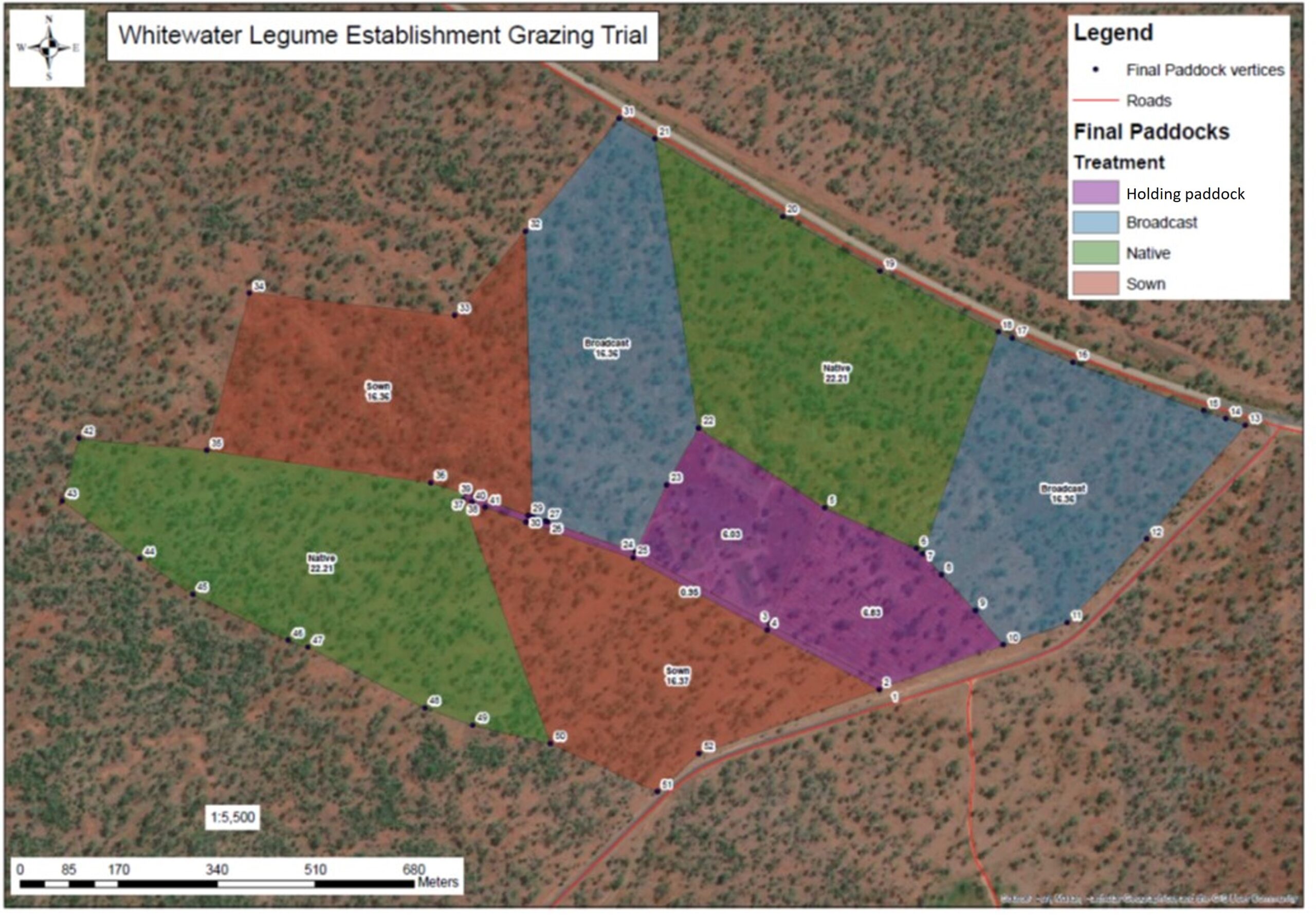
The 100 ha demonstration comprising six paddocks is being developed to compare two methods of establishing the types of stylos on red basalt soils and to compare productivity (pasture and animal performance) over time alongside unrenovated paddocks. The methods are:
(1) ‘sown’: strip planting using cultivation and herbicides to reduce grass competition, broadcasting seed and rolling. Sowing would be planned for mid-wet season and strips likely 10-15 m apart.
(2) ‘broadcast’: broadcasting seed from the air or ground spinner over the whole areas following burning after first storms. This is the traditional method of establishing stylos into grasslands.

The plan is to establish the pastures over the 2024/25 wet season, graze as a weaner paddock and measure animal growth and pasture productivity over 4+ years. The site will also be used to assess the opportunity to mitigate greenhouse gas emissions through establishing legumes. A carbon budget before sowing and repeated after 4-5 years will be completed. The stylos sown will include a combination of shrubby (Seca or Siran), Caribbean (Verano or Amiga) and Caatinga (Primar or Unica) stylos sown at the same sowing rate per hectare using the strip and broadcast methods.
Testing different strip-sowing methods
A small demonstration was developed in the 2023-24 wet season to test which combination of cultivation and herbicide would be most effective for the ‘sown’ (strip) treatment. Combinations of well-adapted and productive grasses and a legume were also tested in combination with the stylos to see if they would benefit the pasture development. An 800 m strip was cultivated using a simple chisel plough in late January 2024 after heavy grazing of the area to reduce cover. Secondary cultivation and herbicide treatments were completed on 15 February:
- First cultivation only (i.e. no further cultivation)
- First cultivation plus spraying glyphosate (Ultramax)
- First and second (single pass) cultivation plus spraying
- First and second cultivation (double pass) only.
Sowing by hand was completed on the same day using seeds tested for germination and the plots rolled afterwards. Each plot was 50 m long.
- Stylo mix (Unica, Seca, Verano) at 9.6 kg/ha in strip
- Stylo + Bisset bluegrass at 2.7 kg/ha in strip
- Stylo + Katambora Rhodes grass (coated) at 12.0 kg/ha in strip
- Stylo plus butterfly pea at 5.2 kg/ha in strip.
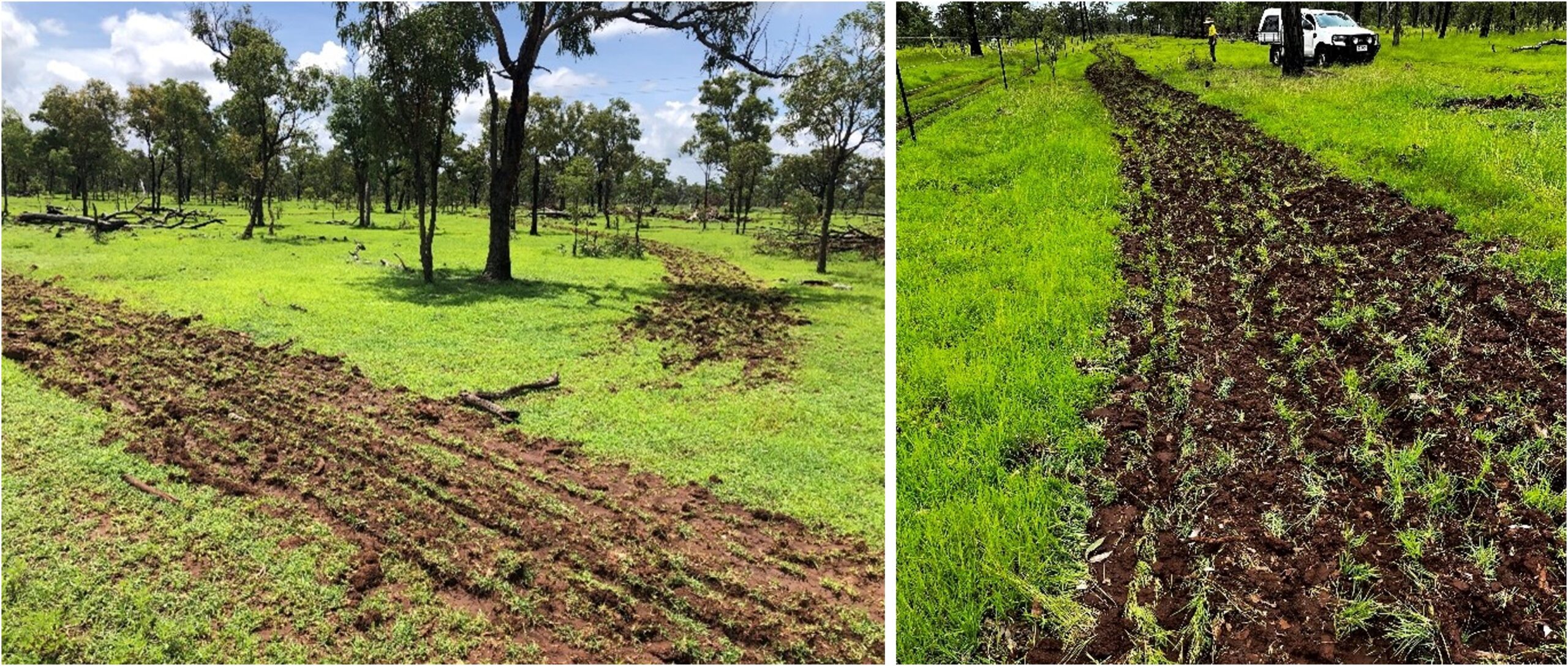
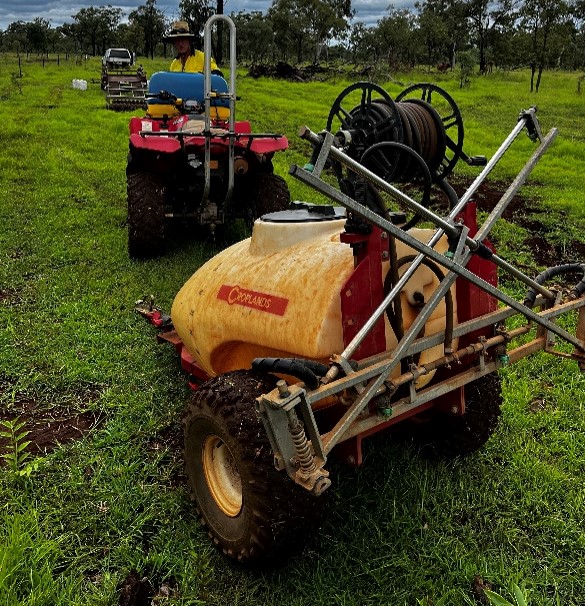
The plots were assessed for plant populations and cover on 27 March 2024, 6 weeks after sowing.
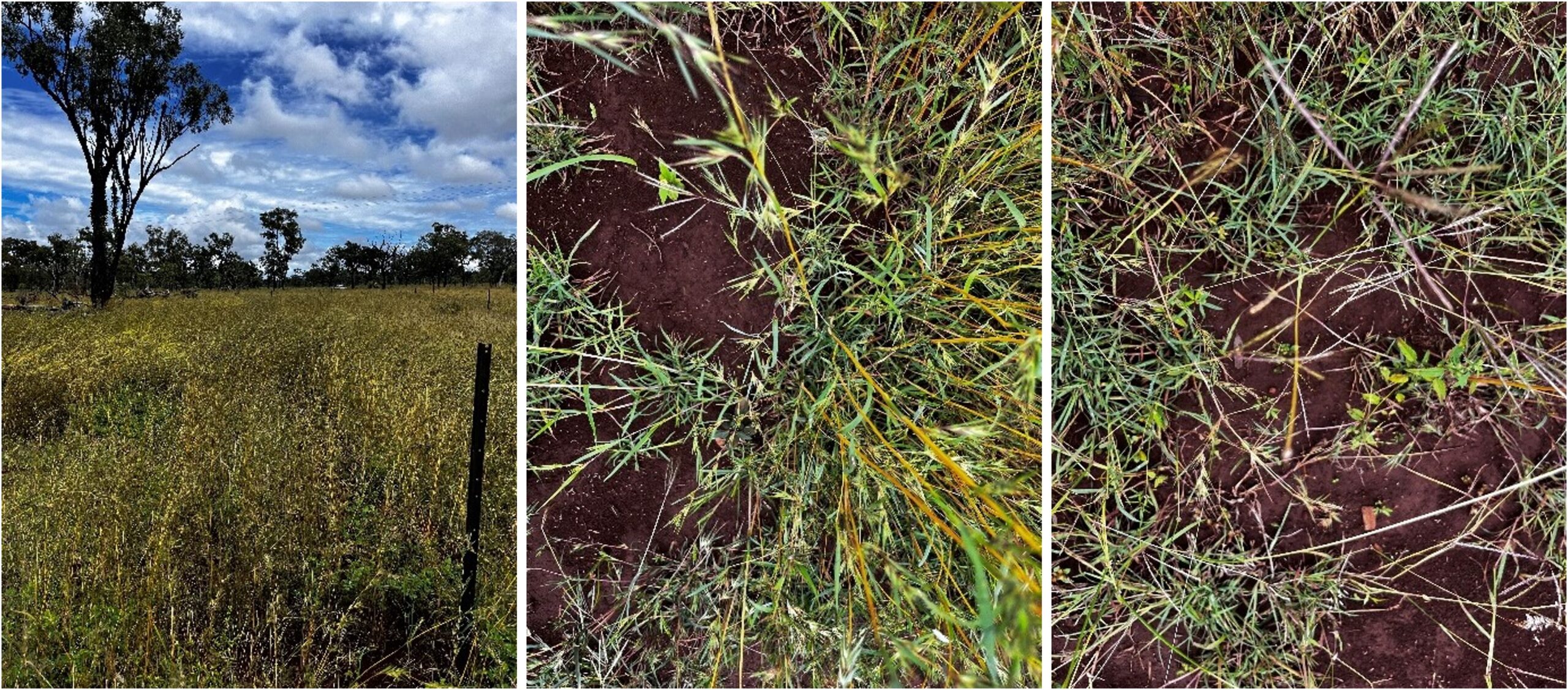
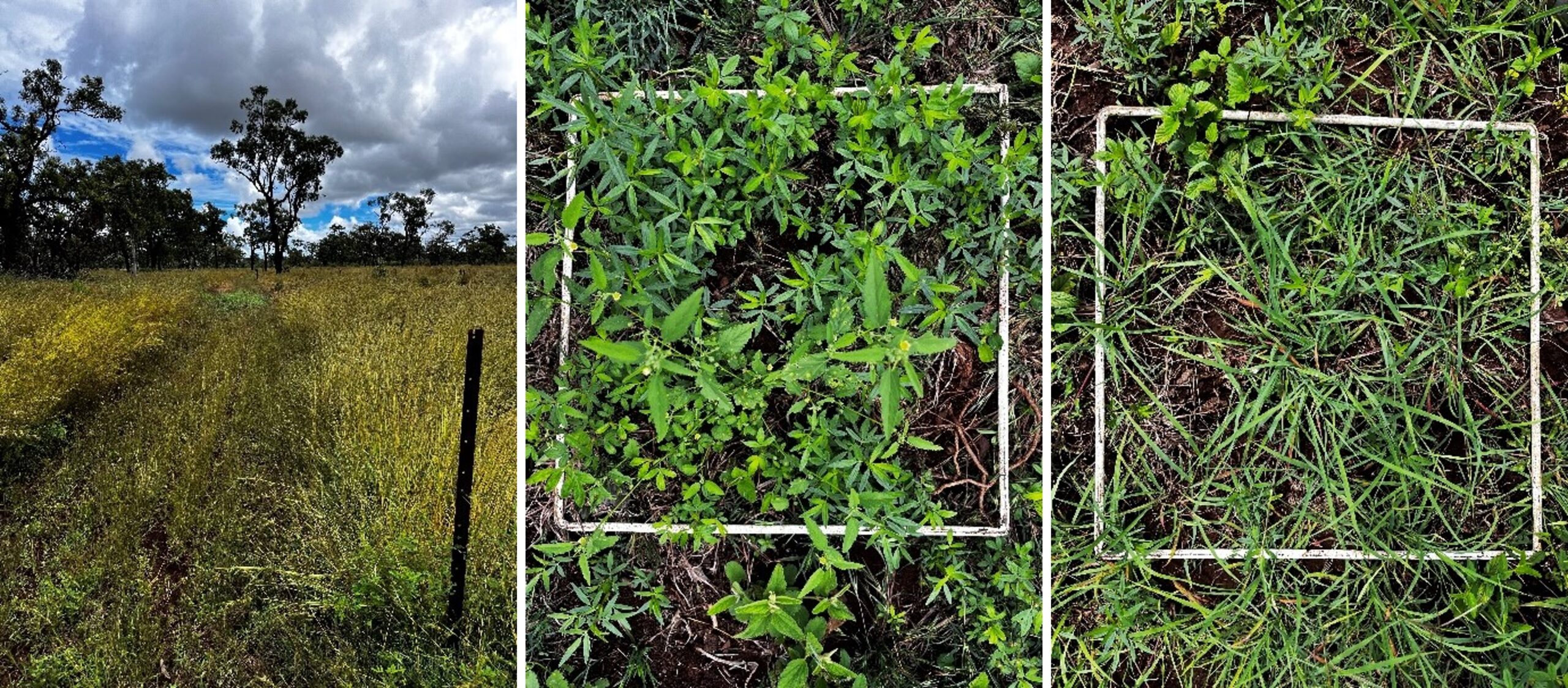
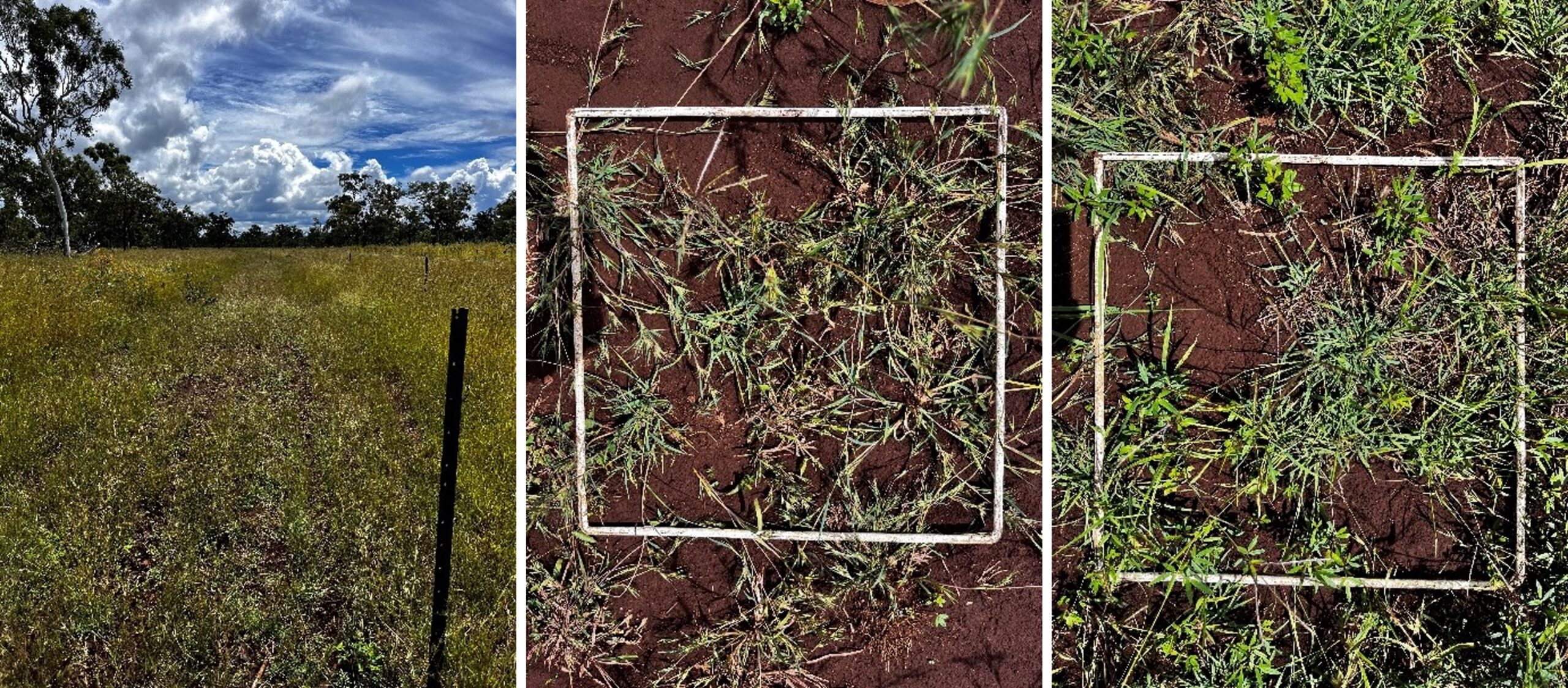
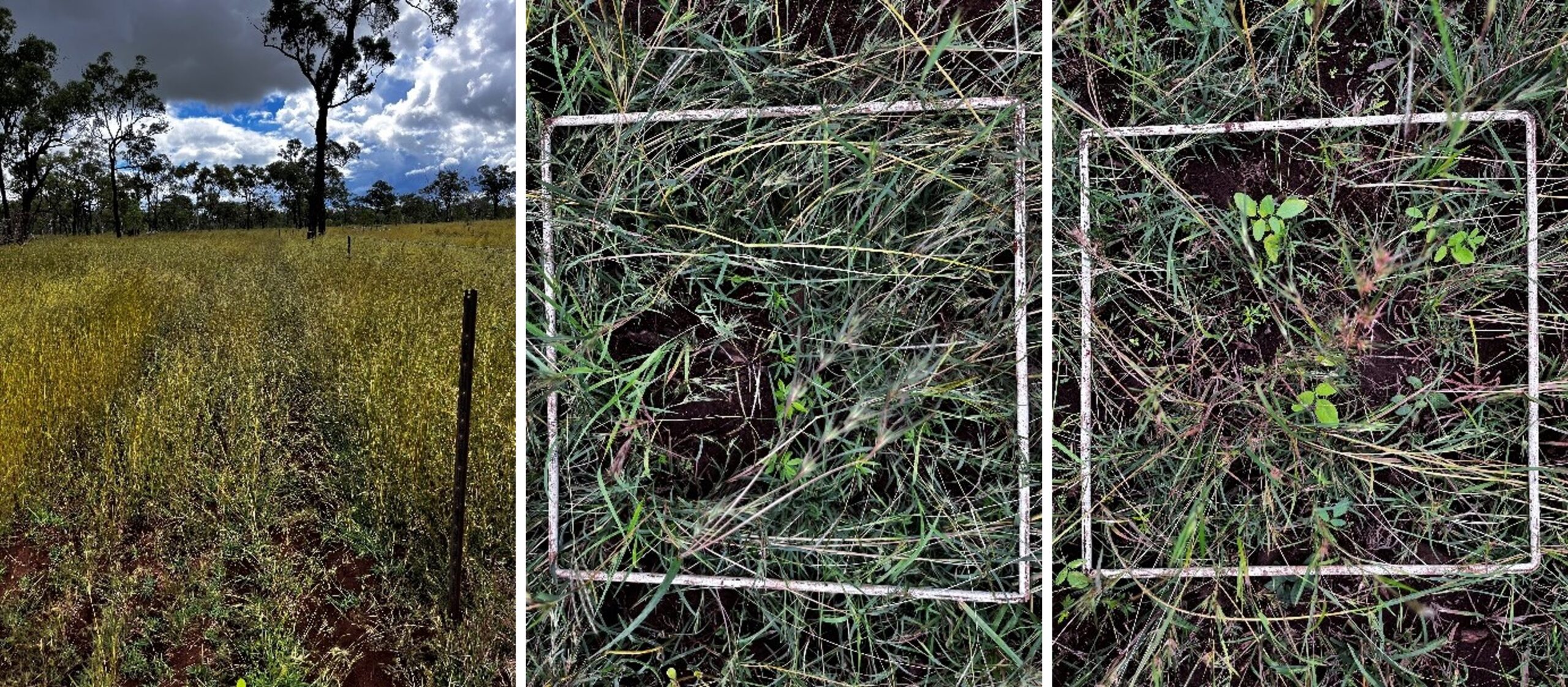
How successful was strip sowing?
All cultivation treatments resulted in good populations of stylos, with all three types of stylo represented. The best establishment occurred in the single cultivation and herbicide treatment. This method also had the lowest cover of weed grasses six weeks after sowing which meant the seedlings were noticeably bigger compared to the other treatments where the grasses shaded the seedlings. The butterfly pea populations were low, probably because the large seed was not buried sufficiently; the best results were in the double cultivation treatment where there were more hollows.
| Preparation treatment | Stylo seedlings/m2 | Butterfly pea seedlings/m2 | Total grader grass and Indian couch cover (%) |
|---|---|---|---|
| Single cultivation | 69 | 1.3 | 67 |
| Single cultivation + herbicide | 125 | 0.5 | 39 |
| Double cultivation + herbicide | 95 | 3.4 | 47 |
| Double cultivation | 104 | 2 | 47 |
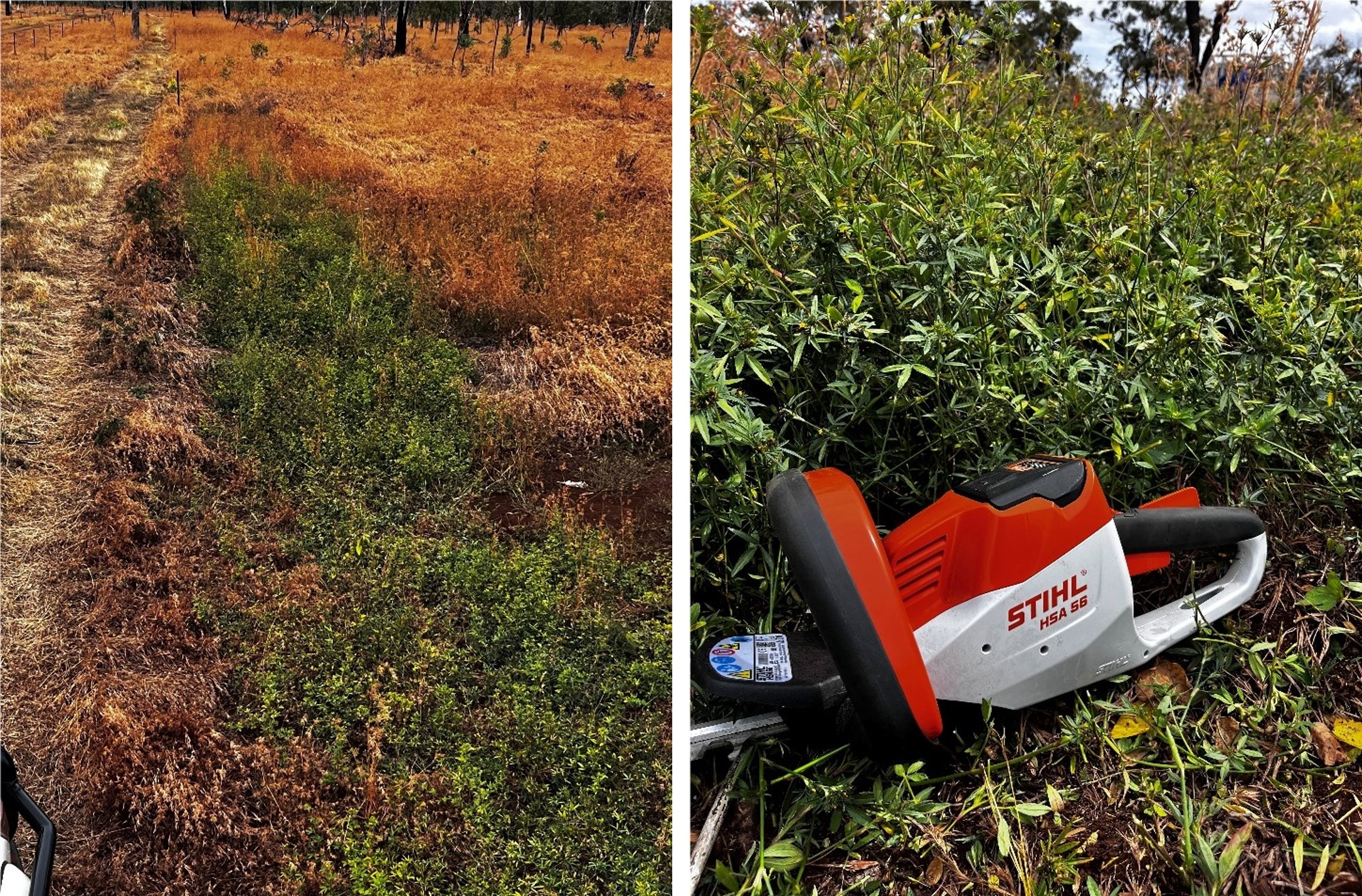
Herbage yields were measured 14 weeks after sowing when the surrounding pasture grasses had seeded and hayed off. Most plants in the treatments without herbicide remained small due to grass competition, whereas those with herbicide treatments grew relatively unimpeded and most plants were flowering and producing seeds. It is anticipated these plants would be sufficiently established for a light grazing by July; this would provide time for some seeds to shed and others to be moved elsewhere in the paddock though grazing. The best treatment (single cultivation + herbicide) averaged 2840 kg DM/ha within the strip and the plants were still actively growing (see graph below). This was the most successful method noting the wet growing season experienced in 2024, and will likely be the method used to establish strips in the paddock demonstration.
The promising results were shared with local beef producers and Gulf Savanna NRM staff at a neighbour day on 11 April 2024. Producers also visited an undeveloped site on a neighbouring property to hear about ‘how to establish legumes’. This generated good discussion and planning has begun for sowing legumes on some of the attendee properties.
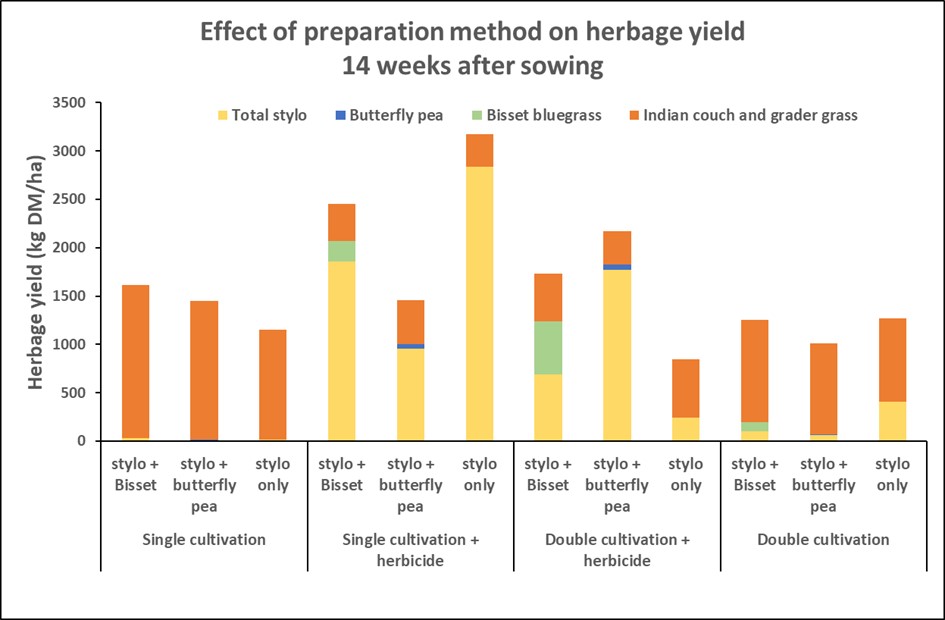
Many thanks
The project team would like to warmly thank Tom and Christine Saunders for hosting the research, on-ground work and advice. This builds on a 10 year partnership between the Saunders’ and the DAF team.
Interested in finding out more?
This work is made possible through the North Queensland Pasture Resilience Project, which is a collaboration between DAF and MLA aiming to encourage the adoption and use of legume pastures in north Queensland. The DAF project team includes research and extension officers based in Mareeba and Charters Towers who regularly travel across north Queensland to work at the various sites and for small producer group days and larger field days. If you would like to know more or get involved in the program, please contact one or more of the following team members.
Research
Kendrick Cox (Mareeba) – 0438 138 262 – kendrick.cox@dpi.qld.gov.au
Craig Lemin (Mareeba) – 0467 804 870 – craig.lemin@dpi.qld.gov.au
Extension
Katie Hay (Mareeba)
Karl McKellar (Charters Towers) – 0418 189 920 – karl.mckellar@dpi.qld.gov.au
This work is delivered through the Queensland Pasture Resilience Program, a partnership between DAF, Meat & Livestock Australia and the Australian Government through the MLA Donor Company.